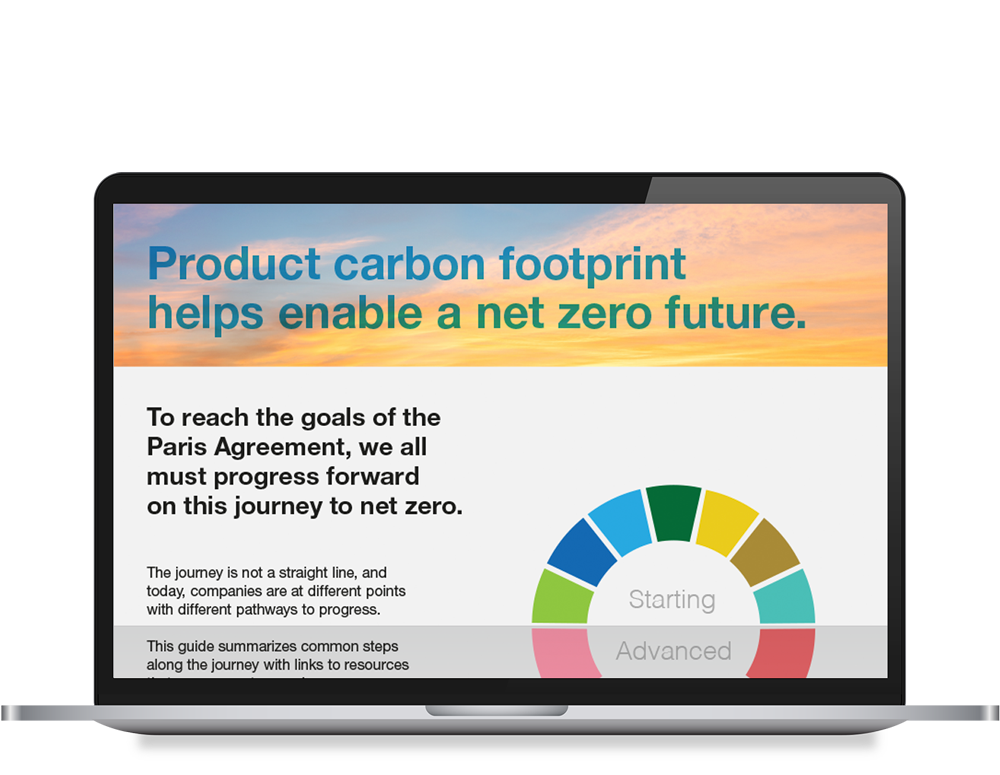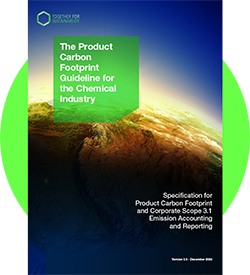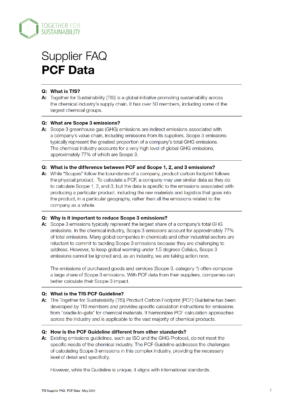The PCF Journey
Eager to understand what’s involved?
Explore the interactive infographic.
The PCF infographic is available in several other languages:

It’s designed to provide all the resources you need, all in one place. Dive in and get learning – together we will make a difference. Should you have any queries, please get in touch.
Eager to understand what’s involved?
Explore the interactive infographic.
The PCF infographic is available in several other languages:

The TfS PCF guideline provides specific calculation instructions for “cradle-to-gate” PCFs for chemical manufacturers. It harmonizes PCF calculation approaches across the industry and is applicable to the vast majority of chemical products.
The TfS PCF Guideline is available in several languages.

![]()
member companies
utilizing the guideline
![]()
Specific to the
chemical industry
![]()
Aligned with international
standards like ISO 14067
![]()
Leverages the credibility of
the chemical industry’s leading
sustainability initiative and
chemical industry point for
WBCSD Pathfinder initiative
Endorsed by
![]()
organizations along
the value chain
![]()
Available in
![]()
Better understand
the GHG emissions
associated with your
products – so you can
improve sustainability
performance and
reporting and reach
your emissions-reduction
targets.
![]()
Improve efficiency,
streamline resources
in PCF calculations and
reduce the amount of
time you spend
using generic guidelines
thanks to the specific
and harmonized
calculation approach
across the industry.
![]()
Report your PCFs to
the level of specificity
many customers are
requesting – so you
can increase customer
satisfaction and
generate new sales.
![]()
Help standardize and
harmonize calculations
of PCF specific to the
chemical industry, as
the “gold standard”
or industry guidance.
![]()
Easy to share with
your business partners
![]()
Aligned with WBCSD
PACT Guidelines
![]()
Control with whom
you share PCF data
![]()
Reduce workload of
entering PCF data into
different systems
Requesting a PCF
Responding to a PCF request
FAQ for suppliers DOWNLOAD

These User Guides and more training material
are available in the TfS Academy. Search for:
TfS PCF Data Exchange solution – SiGREEN
The TfS PCF Guideline serves as a global standard and guideline for calculating Product Carbon Footprints (PCFs) in the chemical industry.
Its primary purpose is to facilitate the sharing of PCF information among supply chain members, enabling companies to track their Scope 3 Greenhouse Gas (GHG) emissions and support reduction efforts. It emphasizes the importance of a well-described basis for modelling, linked to recognised guidelines, to prevent discrepancies resulting from different assessment approaches.
TfS offers courses designed primarily for LCA experts and those who lead on calculating PCFs in a company. Those responsible may be sustainability or environmental leads or may be in operations.
Upon completion of the course, you should be able to:
• Calculate PCFs according to the TfS PCF Guideline
• Understand where to find further information or get help if needed
TfS provides further resources in the TfS Academy and TfS website. We encouraging you to explore these materials and learn more about calculating PCF!

However, the guideline can be helpful for others in the value chain, both upstream and downstream. The graphic below provides an illustrative chemical value chain with notes on the relevance and application of the TfS PCF Guideline to each value chain segment. We encourage you to explore this as a tool in understanding the value chain.
